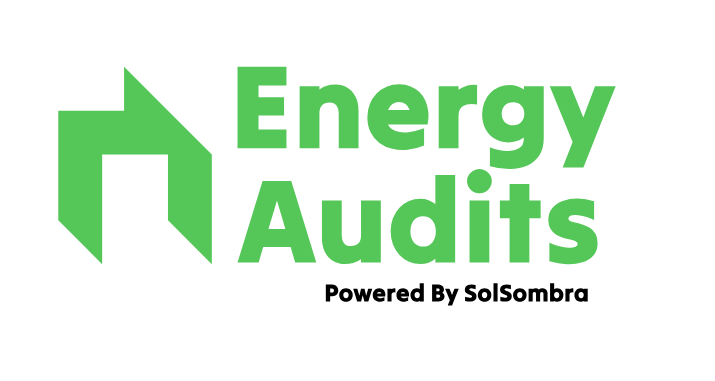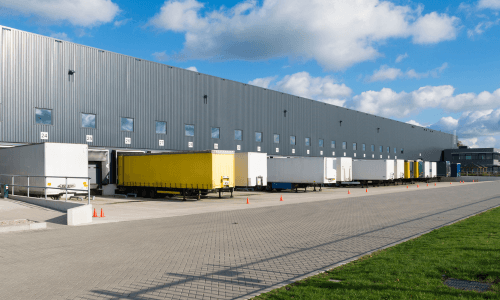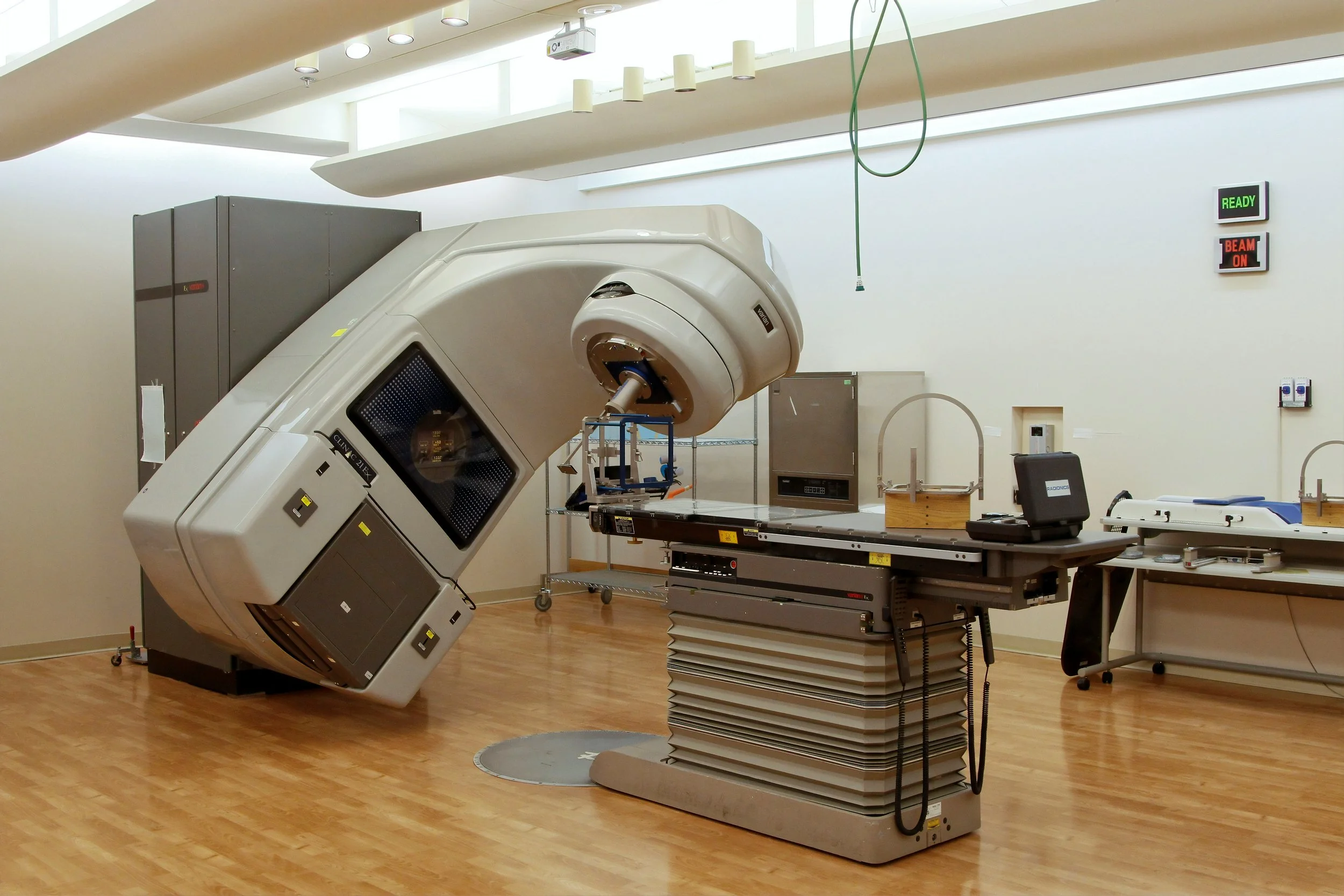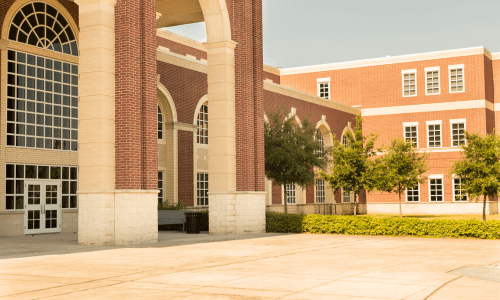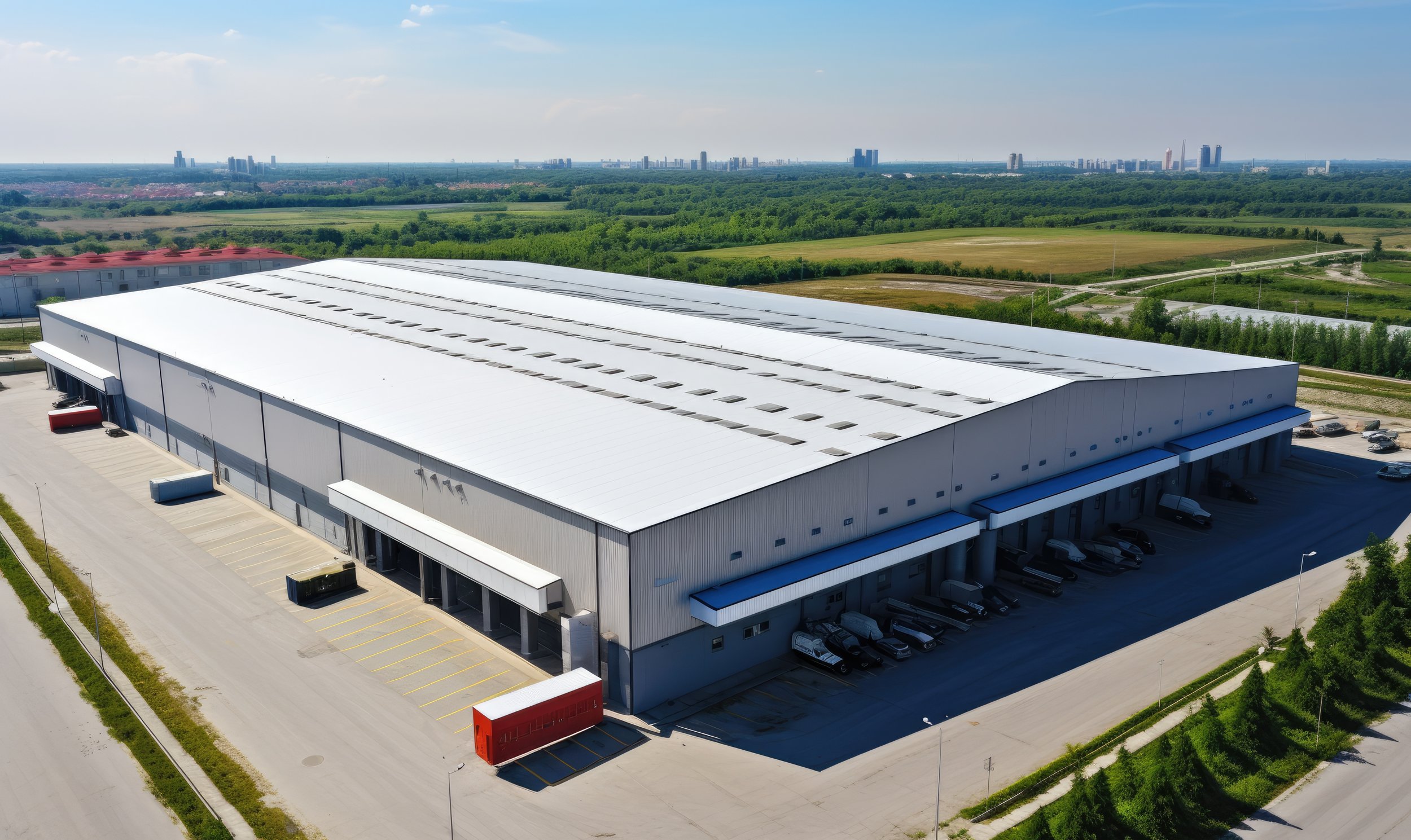
Energy Audits for
Logistics
Get in Touch
Energy Use in Logistics
The logistics sector – spanning warehousing, distribution centers, transportation fleets, and cold storage facilities – is a cornerstone of global commerce but is also a significant consumer of energy. Warehouses and distribution centers require energy for lighting vast spaces (often 24/7 in high-throughput facilities), HVAC or ventilation (especially if climate-sensitive goods or worker comfort are factors), material handling equipment like conveyors and forklifts, and frequently cold storage operations for perishable goods. Transportation fleets (trucks, delivery vans, forklifts, etc.) consume large amounts of fuel, primarily diesel or gasoline, for hauling goods. Together, these activities contribute substantially to operating expenses and carbon emissions. Rising fuel costs in particular have made logistics operations more expensive, and inefficient facility operations (like poorly insulated warehouses or outdated lighting) further contribute to high overhead. The challenge for the logistics sector is to move goods efficiently while minimizing energy waste – doing so not only cuts costs in a low-margin industry but also reduces environmental impact. Notably, improving energy performance in logistics facilities can now be quantified through programs like NABERS; for example, Australia has introduced NABERS Energy ratings for warehouses and cold stores, providing a framework to measure and improve sustainability in this sector.
Opportunities for Energy Efficiency
Energy audits play a vital role in identifying opportunities for optimization in logistics. Key areas of focus include:
Warehouse Lighting: Warehouses traditionally used high-intensity discharge (HID) lights (like metal halide or high-pressure sodium lamps) that consume a lot of power and often need to remain on continuously. Switching to LED high-bay lighting can cut lighting energy use by half or more, and LEDs have the advantage of instant on/off capability. This makes it practical to add motion sensors in warehouse aisles – so lights dim or turn off in sections with no activity (for example, a remote corner of a warehouse where no one has been for 15 minutes) and then instantly come back when a forklift or worker enters. Given the typically large square footage of warehouses, these “lights out” periods in various zones add up to huge savings. Additionally, incorporating daylight sensors near skylights or dock doors can harvest natural daylight and dim artificial lights on sunny days.
HVAC and Warehouse Climate Control: Many warehouses are only partially conditioned; some have heating for winter (to keep workers from freezing) but no cooling (with passive ventilation for summer). Others, especially those storing sensitive products, might need cooling year-round. In either case, improving the building envelope – adding insulation to the roof, sealing gaps in walls and dock doors, using HVLS (High Volume Low Speed) fans to destratify warm air in winter – can reduce the load on heating systems and improve comfort with minimal energy. For warehouses that do have cooling, ensuring zoning so that only occupied areas (like packing stations or offices within the warehouse) are cooled to comfort levels, and using economizer cycles (using cool outside air when available) can save energy. Rapid roll-up doors or air curtains at loading docks minimize exchange of inside air with outside, which is crucial if the warehouse is conditioned or if it's a cold storage facility.
Refrigeration and Cold Storage Efficiency: Cold storage warehouses (refrigerated and frozen) are extremely energy-intensive. Key efficiency opportunities here include: improving insulation (e.g., ensuring doors have proper seals, adding strip curtains or air locks to minimize warm air ingress when doors open), using variable speed drives on compressors and evaporator fans (so they can modulate with load rather than on/off cycling), optimizing defrost cycles (or using demand-defrost systems that defrost only when necessary). A significant strategy is installing a thermal storage (like an ice bank) so that refrigeration can run more during off-peak hours (when electricity is cheaper or when solar power is available) and less during peaks – effectively using stored “cold” to get through high-demand periods. Additionally, refrigeration system tuning (like setting suction pressure as high as product safety allows, and condensing pressure as low as ambient conditions allow) can yield energy savings without capital cost.
Material Handling Equipment: Logistics operations use forklifts, automated guided vehicles (AGVs), conveyors, sorters, etc. Converting fuel-powered forklifts to electric can reduce emissions on-site (and typically, electric forklifts have lower total energy cost, especially if charged during off-peak times or with on-site solar). Ensuring efficient charging practices (like opportunity charging during breaks to avoid adding new peak loads) and possibly using fast chargers with smart controls can keep the fleet running optimally while managing energy. For conveyor and sorter systems, adding sensors and controls so they run only when parcels are present can save a lot of energy – e.g., sections of a conveyor can shut down when no packages are detected upstream, or high-speed sorters can go into standby when the throughput is low. Using regenerative drives on conveyors or cranes (recovering energy when lowering goods) can also recoup energy that would otherwise be wasted as heat.
Fleet and Transportation Efficiency: While not part of a facility’s energy usage directly, fuel efficiency in transportation is crucial to overall logistics energy efficiency. Route optimization software can reduce kilometers driven (saving fuel and time). Telematics can monitor driver behavior for idling or harsh acceleration and enable training or incentives for more efficient driving. Transitioning to alternative fuels or electric vehicles (EVs) for distribution fleets is an emerging opportunity: for local deliveries, electric vans and trucks can be viable, especially if a charging infrastructure is in place at the warehouse. Fuel-efficient tires, regular maintenance (keeping engines tuned and tires inflated), and aerodynamic add-ons for trucks (like trailer skirting and tail fairings) also improve mileage. The energy audit may extend to analyzing fleet fuel data and suggesting such measures. Moreover, if EVs are adopted, coordinating their charging with facility energy use (maybe charging trucks when the warehouse PV system is producing at peak) becomes an integrated energy strategy for the site.
Energy Management Systems & Renewable Integration: Implementing an Energy Management System (EMS) in large logistics facilities can provide real-time insights and control. For instance, monitoring can reveal if many forklift chargers turn on at the same time (creating a spike) – an EMS could stagger them. It can also coordinate HVAC, lighting, and equipment schedules with shift schedules more precisely. On the renewables side, solar panels on warehouse roofs are increasingly common (warehouses usually have large, flat roofs with plenty of space). Solar can directly power daytime operations like lighting and conveyor belts, and if paired with battery storage, it can also help handle evening or early morning loads (like pre-cooling a cold storage before the afternoon heat, using solar energy stored from midday). Some logistics companies even explore installing wind turbines if they have a large campus and good wind, or biomass boilers if they have access to waste (though solar is generally the easiest). There’s also synergy in using biogas or renewable natural gas from waste for any fleet or on-site generators. Embracing renewables not only cuts energy costs but also hedges against fuel price volatility and can significantly reduce the carbon footprint of logistic operations, an area of rising importance as many retailers and manufacturers press their supply chains to become greener.
Overall, by optimizing across these areas, logistics businesses can cut costs in a sector where margins are often thin, and improve reliability (e.g., well-maintained, efficient equipment is less prone to failure, and renewable/self-generation can provide resilience against grid issues). It also positions them well as partners in a sustainable supply chain – increasingly, companies want to know their logistics providers are working to reduce emissions and energy waste.
Renewable Energy Integration
Logistics companies have significant potential to integrate renewable energy and pursue sustainability:
Solar-Powered Warehouses: As mentioned, the expanse of warehouse roofs can be leveraged for solar PV installations. A distribution center could potentially generate a sizable fraction of its energy needs. Some logistics parks even aim for net-zero energy operations during daylight with massive solar arrays. There are examples of warehouses in Australia and elsewhere achieving NABERS 5-star or 6-star ratings partly due to solar installations offsetting most of their grid consumption.
Wind Energy at Depots: If a logistics hub is in an open area with good wind resources, installing one or multiple mid-sized wind turbines could be viable. This is less common than solar due to site constraints, but in large, remote distribution centers it could supplement power, especially overnight (when winds may blow stronger and solar is absent, complementing the solar generation profile).
Biofuels for Fleets: The use of biofuels such as biodiesel or renewable diesel in trucks can reduce the fossil fuel use of the fleet without requiring new vehicles. Some logistics firms contract supplies of biodiesel blends to fuel their trucks, cutting net CO₂ emissions. For forklift fleets, biogas or hydrogen fuel cells are alternatives to look at (several warehouses now use hydrogen fuel cell forklifts, which still use energy but can be more efficient and quick to refuel, and if the hydrogen is from renewable electrolysis, it’s a green solution).
Green Logistics Certification: Beyond hardware, integrating renewable energy helps logistics companies meet certifications or standards (like ISO 14001 for environmental management, or industry initiatives for green logistics). Displaying sustainability credentials can be a selling point to clients. A warehouse that runs on a substantial portion of renewable energy and has an excellent energy rating can attract customers who want low-carbon fulfillment services.
Electric Vehicle Charging Infrastructure: As delivery fleets become electric, logistics sites will effectively become fueling stations for their vehicles. Integrating on-site solar with smart EV charging ensures that a good chunk of driving is powered by the sun. This reduces fuel (electricity) costs for vehicles and buffers the load on the grid. Some facilities may even provide excess solar generation back to the grid or use it to charge vehicles during midday (which also is often when vehicles are out delivering, but trucks can be scheduled to return during solar peak for partial recharging).
Battery Storage: Implementing battery storage at logistics facilities can serve multiple purposes – peak shaving (reducing expensive peak demand charges by discharging at those times), storing midday solar for use in the evening (when perhaps cold storage load is still high or trucks return and plug in), and providing backup power to critical systems (like IT servers or security systems) in case of outages. Given the increasing reliability and declining costs of lithium-ion batteries, this is becoming a more common feature in new high-tech warehouses.
By integrating these renewable and advanced energy technologies, logistics operations become more sustainable and resilient. Energy audits often highlight these integration opportunities as part of a long-term strategy: maybe not everything is done at once, but an audit can lay out a roadmap (e.g., “Year 1: LED lights and HVAC tune-up, Year 2: 500 kW solar install, Year 3: add 1 MWh battery, Year 4: transition 50% of forklifts to electric and install charging, etc.”).
How Energy Audits Can Help Logistics Companies
At Energy Audits, we understand the unique challenges of the logistics sector. Our comprehensive audits uncover inefficiencies across warehouses, transportation, and cold storage operations. Specifically, an energy audit in a logistics context will:
Analyze Facility Energy Data: We examine electricity and fuel usage patterns at warehouses – identifying how much energy is used in lighting, refrigeration (if applicable), HVAC, etc., often through sub-metering or installing temporary loggers. We also look at peak demands: for instance, do all the battery chargers for forklifts kick in at the same time causing a spike? Does the cold storage have peaks when defrost heaters come on and can those be managed better?
Inspect Equipment and Infrastructure: During a site visit, we inspect lighting (type, layout, controls), HVAC systems (roof units, unit heaters, any office ACs), dock door seals, insulation, conveyor systems, forklift charging stations, and more. We may use thermal cameras to spot heat leaks in cold storage or poor insulation areas in a warehouse roof. We also observe operations – e.g., how often and long doors remain open, whether machines idle.
Review Fleet Operations: If included in scope, we review transportation logistics – routes, fuel consumption records, maintenance logs, etc. This holistic approach might reveal, for example, that adjusting delivery schedules or routes could reduce vehicles or miles driven (an operational efficiency that saves energy and money). We identify if switching certain routes to smaller EV trucks could be feasible and beneficial.
Propose Energy Solutions: Our recommendations will span both facility and fleet. On the facility side, we will advise on all the opportunities mentioned: e.g. “Replace metal halide high-bays with LEDs and install motion controls – expected 60% lighting energy reduction, payback X years”; “Install VFDs on 10 roof ventilation fans – will save Y% on fan energy and improve control”; “Implement a staged charging system for forklifts to limit simultaneous chargers – can cut peak power by Z kW, saving $... in demand charges annually”; “Consider solar PV ~300 kW on available roof area – would produce ___ kWh/year, supplying ~__% of facility use, with ROI in __ years with incentives”.
Fleet and Process Efficiency: We might recommend, for instance, “Adopt a driver training telematics program – case studies show ~5-10% fuel savings” or “Switch yard vehicles (that operate only on-site) to electric models.” If refrigerated trucks idle at docks to maintain cooling, we’d suggest plug-in stations so they can use grid power instead of idling engines.
NABERS and Sustainability Guidance: If aiming for a NABERS rating or other certification, we outline the steps needed to reach a desired star rating (like improving insulation or adding renewables to reach a higher band). We also note any compliance issues or opportunities with programs like government grants for upgrading equipment or adopting clean technologies (common in many regions to support cleaner freight and warehousing).
By recommending tailored energy solutions – such as optimized fleet management and renewable energy adoption – we help logistics businesses cut costs, improve efficiency, and reduce environmental impact. For example, one might be an integrated solution: install solar + battery and shift some forklift charging to daytime solar hours and evening battery power, resulting in almost free energy for that part of operations for much of the year.
The results of implementing audit recommendations are often striking: lower electricity bills at warehouses, less diesel fuel consumption per delivery (which can be a competitive advantage as fuel costs or carbon costs rise), and a more sustainable operation that can be marketed to customers concerned about supply chain emissions.
Furthermore, efficient logistics operations often correlate with better performance and reliability: good maintenance practices mean fewer breakdowns (e.g., well-maintained, efficient refrigeration keeps goods at stable temperatures with less risk of failure), and route optimizations not only save fuel but improve on-time performance.
An energy audit ensures that no stone is left unturned – we cover everything from the warehouse lighting down to the efficiency of the tires on the trucks (if data shows that's an issue). By partnering with us, logistics companies get a comprehensive view of where they stand and a practical plan to become a leader in energy-efficient logistics, which is increasingly becoming part of the value proposition in the industry (some companies now choose 3PL providers based on their sustainability performance, for example).
Small Logistics Operators: For small trucking companies or local warehouse owners (SMEs), we provide straightforward advice that can be implemented without massive capital. This may include simple scheduling changes (e.g., avoid dispatching half-empty trucks by better load consolidation), LED lighting retrofits in a small warehouse, or installing a few solar panels to run office and fuel pumps on-site. These changes make a noticeable difference in fuel and power bills, improving the competitiveness of small operators and freeing up resources to grow the business.
Government & Public Sector Logistics: Entities like postal services (e.g., Australia Post distribution centers), military logistics bases, or local council depots benefit from audits to optimize their operations. We help these public sector logistics arms reduce energy costs, thereby saving taxpayer money and aligning with governmental green objectives. For instance, we might audit a city’s public works vehicle depot and recommend installing EV charging for the transition to electric garbage trucks, powered by a new solar carport – reducing municipal fuel expenses and emissions.
Large 3PLs and Logistics Corporations: Third-party logistics providers and large supply chain companies often operate multiple sites and a vast fleet. We partner with these corporations to integrate energy efficiency into their corporate strategy. This might involve auditing a number of key facilities worldwide and developing a global energy efficiency playbook for all warehouses (covering things like standard LED specs, preferred equipment vendors, and operational best practices), as well as a fleet efficiency framework (like a target to convert X% of line-haul to rail or electric, use of route planning software, etc.). These organizations not only see major cost savings (fuel and electricity are huge line items for them) but can also showcase massive carbon footprint reductions to their clients and investors. As e-commerce and logistics giants increasingly set net-zero goals, our work helps them identify the most impactful projects – for example, an audit might show that one mega-warehouse is using outsized energy and fixing that one yields more savings than five smaller ones combined, guiding capital deployment. The end result for big logistics companies is a more sustainable and future-ready operation, which is crucial as regulation (like potential fuel carbon taxes or mandates for zero-emission vehicles) looms on the horizon. They also gain marketing bragging rights, such as being able to claim “our distribution centers are 50% solar-powered and we’ve cut delivery emissions by 30%,” which can be a selling point to environmentally conscious clients.
Industries Served
